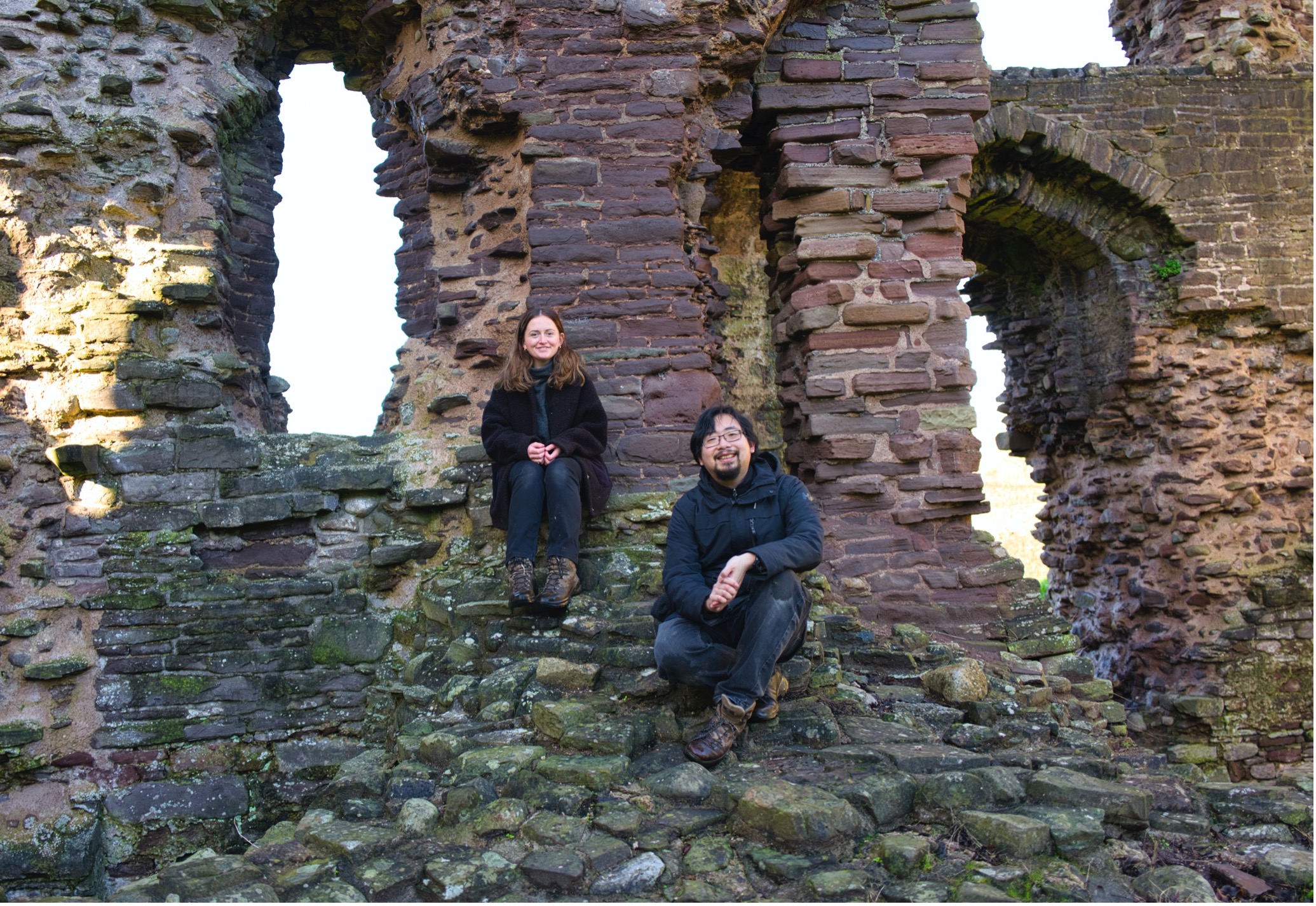The Heritage Partnerships Team is very pleased to feature this blog-post by Megan Kirkpatrick and Jonathan Lim about their recent digital project about the Abergavenny Castle. Megan undertook a week-long Micro-Internship with the National Trust Partnership in March 2021.
Our project began in January this year when Jon and I came across a British Archaeological Association (BAA) flyer that introduced a competition for digital tours, designed to re-engage visitors with heritage sites forced to close due to the pandemic.
With no confirmed date for re-opening opportunities for the public to engage with heritage sites were pretty limited. Jon and I were inspired by both the timeliness and scope of the competition and began thinking of a suitable case-study and digital platform.
We settled on Abergavenny Castle as it’s somewhere I know well (being just a short walk from my parents’ home in south Wales) and is also one of the case studies for my DPhil research. Jon suggested using ESRI’s Storymap service – a platform that combines remote mapping functionality with multimedia content. Jon has previously used Storymaps to showcase his own research on Native Alaskan cultural landscapes.
We formed a collaborative partnership with MonLife Heritage (who care for the castle) and began work on our digital tour in late January. The timescale was tight (the deadline for entries was the 14 February), but this turned out to be ample time to produce a tour that highlighted the fascinating history of Abergavenny Castle. From the castle’s foundation in c.1087, through to the present-day, it has had an important role to play in shaping the history of South Wales, and we wanted our virtual tour to highlight this. We were really pleased that our completed tour received an award from the BAA and more importantly is being used by MonLife Heritage across their social media platforms as a way of engaging visitors who would not have otherwise been able to ‘see’ Abergavenny Castle in person.
Our tour not only increases accessibility to the Castle, but it highlights the historical and archaeological relevance of the surrounding landscape, something which is overlooked (often for practical reasons) when ‘real life’ visits are made to heritage sites. Exploring the dynamic relationship between the built-and-natural environments and political power is the subject of my DPhil research, and the integrated use of spatial analysis techniques underpins both our research projects. The BAA’s digital tour competition provided an excellent opportunity for us to combine our interests and skills in a format that is accessible to the public, and was such a rewarding project to work on.
You can view our tour of Abergavenny Castle here.
Whilst Jon has used Storymaps in his own research before, this was my first experience of using ESRI’s Storymap service and I was really impressed by its effectiveness and relative ease of use. To explain in a little more detail what Storymaps are, this is a service offered by ESRI, the makers of ArcGIS, and is a way of displaying media content alongside spatial information like maps, placed alongside some text, all working together to tell a story in a way which is visually very appealing and fun to follow.
It was really important that we presented our research in a way which is accessible to a wide audience and that it was as visually engaging as possible. We think Storymaps provide a great spatially-geared alternative to more traditional forms of presentation such as PowerPoint as it allows the presentation of 2D and 3D spatial data in an intuitive and directed manner – the audience controls the pace, moving at their own speed by scrolling. We think it’s really important to emphasise how straightforward Storymaps can be to use and develop, because of their high visual impact they are sometimes perceived to be difficult to create, but this isn’t the case! If you feel like making one yourself, please check out our Storymap information sheet here.

The authors, Megan Kirkpatrick and Jonathan Lim at Abergavenny Castle, 2020. ©Megan Kirkpatrick and Jonathan Lim.
Megan Kirkpatrick and Jonathan Lim are DPhil Students in Archaeology at the University of Oxford.
Megan is researching the significance of castle siting in Wales, to demonstrate the affective and dynamic relationship between the built-and-natural environments, and political power. Megan can be contacted at megan.kirkpatrick@arch.ox.ac.uk or on Twitter at @MAKirkpatrick95.
Jonathan’s research combines remote sensing with ethnographic techniques to understand the cultural landscape of Quinhagak, a community of Native Alaskan Yup’ik people by the shore of the Bering Sea. You can read more about his TORCH and RAI-funded project here. He can be contacted at Jonathan.lim@arch.ox.ac.uk.
National Trust Partnership
TORCH Heritage Programme Homepage